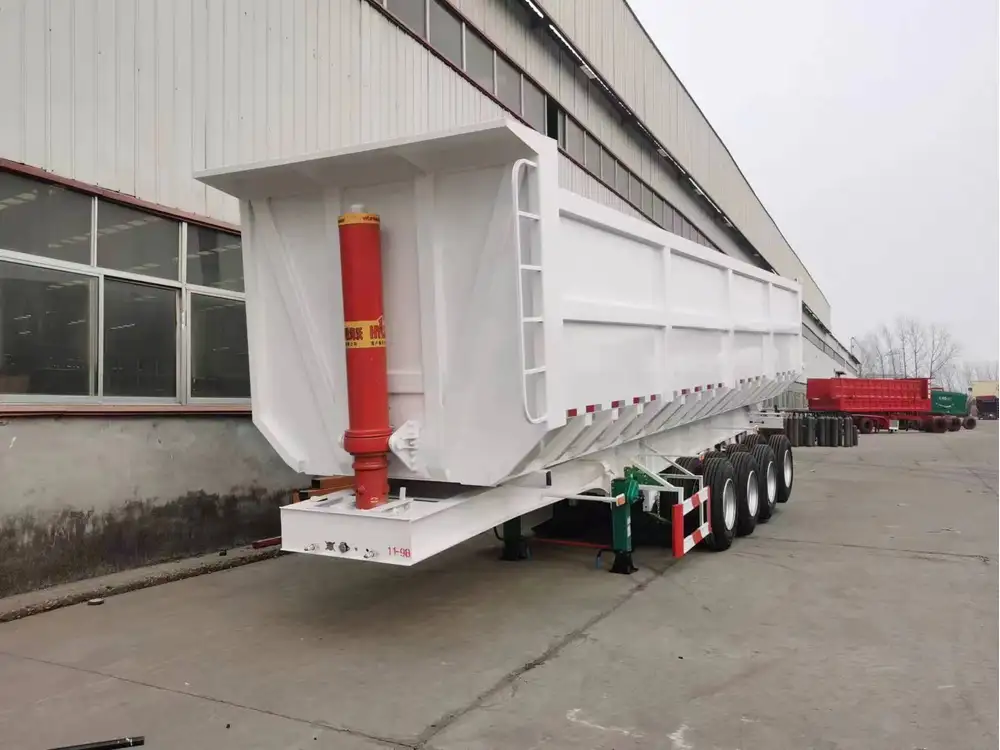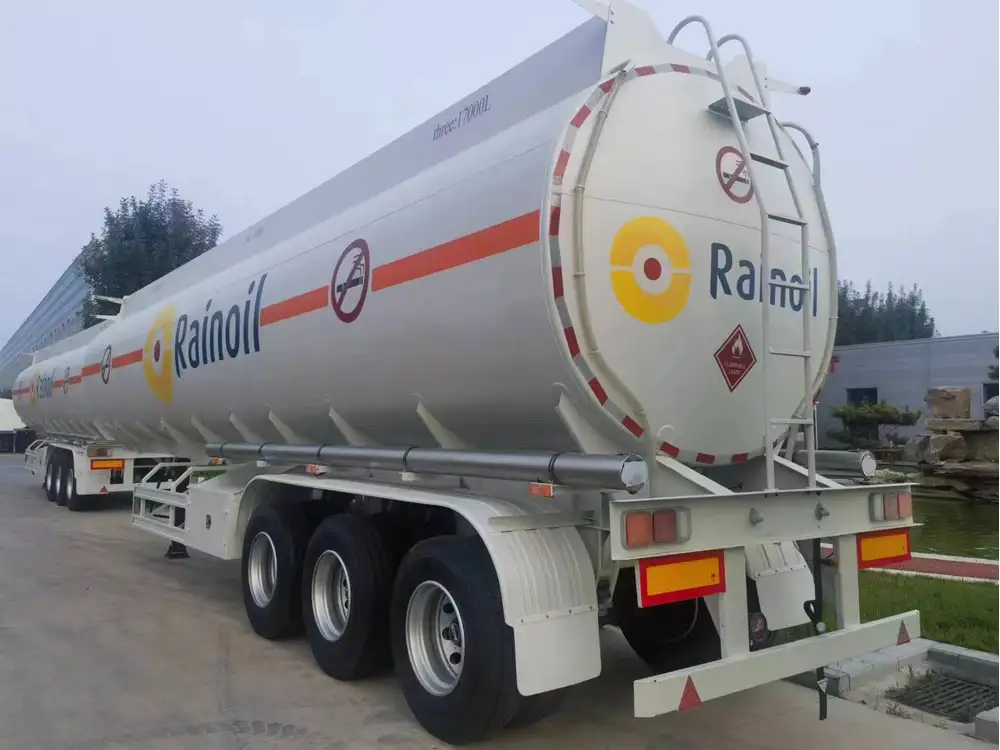Tanker trucks are an indispensable component of the logistics and transportation industries, specifically designed for the safe and efficient transport of various liquids and gases. Understanding the diversity and functionality of these vehicles is crucial for businesses and individuals alike. In this article, we will provide an exhaustive examination of what tanker trucks carry, their types, and the regulatory frameworks governing their use.
Types of Tanker Trucks and Their Capacities
Tanker trucks come in various shapes and sizes, each tailored to transport specific substances. Below is a detailed comparison of the different types of tanker trucks, their typical cargo, and the capacities they can carry.
| Type of Tanker Truck | Purpose | Typical Cargo | Capacity |
|---|---|---|---|
| Milk Tankers | Dairy transport | Liquid milk | 5,000-10,000 liters |
| Fuel Tankers | Fuel distribution | Gasoline, diesel | 10,000-40,000 liters |
| Chemical Tankers | Industrial use | Chemicals, hazardous materials | 7,000-40,000 liters |
| Water Tankers | Firefighting, agriculture | Potable water, irrigation | 5,000-20,000 liters |
| Beverage Tankers | Food industry | Juices, soft drinks | 10,000-30,000 liters |
| Cement Tankers | Construction | Dry bulk cement | 15,000-30,000 liters |
| Food Grade Tankers | Food processing | Edible oils, syrups | 5,000-30,000 liters |
1. Milk Tankers
Milk tanker trucks play a crucial role in the dairy supply chain. These specialized trailers are meticulously designed to maintain a controlled temperature and hygiene standards, critical for preserving milk quality during transportation.
Features:
- Insulated Tanks: Prevents thermal degradation.
- Cleaning Systems: Ensures hygiene through automated washouts and sanitization processes.

2. Fuel Tankers
Fuel tankers are one of the most recognized types of tanker trucks, easily identified by their cylindrical shape and bright colors. These vehicles transport refined petroleum products from refineries to retail outlets and distribution centers.
Regulations:
- Precise adherence to the Environmental Protection Agency (EPA) regulations is essential to mitigate environmental risks associated with fuel spills or leaks.
3. Chemical Tankers
Chemical tankers are adept at transporting a range of hazardous materials. These trucks are engineered to withstand the corrosive nature of many chemicals.
Specifications:
- Double-Hulled: Provides additional safety against leaks.
- Labeling Requirements: Must display proper hazardous material signs in compliance with the Department of Transportation (DOT) regulations.
4. Water Tankers
Water tankers are essential for firefighting, irrigation, and potable water supply. These tankers can range from small mobile units to expansive models for agriculture.
Applications:
- Emergency Services: Used by fire departments to combat blazes in remote areas.
- Agricultural: Ensures adequate irrigation during drought periods.

5. Beverage Tankers
Transporting beverages, particularly soft drinks and juices, requires specialized tankers to maintain flavor and freshness.
Characteristics:
- Food-Grade Standards: Must meet stringent conditions set forth by food safety agencies.
- Tank Linings: Often utilize stainless steel or fiberglass to prevent contamination.
6. Cement Tankers
Cement tankers transport powdered materials like cement, which require unique handling due to their dry nature. These trucks are equipped with blowers for pneumatic transport.
Key Points:
- Pneumatic Systems: Facilitate the transfer of dry materials without spillage.
- High Capacity: Can carry significantly large quantities, reducing the number of trips required.
7. Food Grade Tankers
Food-grade tankers are highly regulated to ensure the safety and integrity of food materials during transport.
Regulatory Compliance:
- Must adhere to guidelines set forth by the Food and Drug Administration (FDA) regarding contamination and sanitary conditions.

Safety Measures and Regulations Governing Tanker Truck Operations
Transporting liquids, particularly hazardous substances, introduces a range of safety and regulatory challenges. Maintaining compliance with federal, state, and local regulations ensures both public safety and environmental protection.
Key Regulatory Entities
Environmental Protection Agency (EPA)
- Governs emissions standards and ensures spill reporting procedures.
Department of Transportation (DOT)
- Enforces regulations related to the safe transport of hazardous materials.
Occupational Safety and Health Administration (OSHA)
- Ensures that tanker operations meet health and safety requirements for workers.
Best Practices for Safety
- Regular Inspections: Performing thorough inspections of tanker equipment and tank integrity.
- Training Programs: Providing drivers with essentials in hazardous materials handling and emergency response measures.
- Leak Containment Systems: Utilizing secondary containment systems to manage potential spills.

Transportation Challenges and Solutions
Tanker truck operators encounter numerous challenges when transporting materials. Below are predominant issues and potential solutions:
1. Risk of Spills
Challenge: Unintentional spills can lead to environmental damage and regulatory fines.
Solution: Implement advanced monitoring systems that use sensors to detect leaks and alert drivers in real-time.
2. Weather Conditions
Challenge: Adverse weather can impact driving safety and schedule adherence.
Solution: Employing GPS and weather forecasting technology enables route adjustments for optimal travel conditions.

3. Regulatory Compliance
Challenge: Navigating the evolving landscape of transportation regulations can be complex.
Solution: Maintaining a dedicated compliance team to monitor changes and adjust operational practices accordingly.
The Future of Tanker Truck Transportation
The tanker truck industry is on the cusp of evolution, driven by advancements in technology, sustainability considerations, and regulatory shifts.
Trends Influencing Tanker Trucks
- Automation and Telematics: Integration of smart technologies for route optimization and enhanced monitoring systems.
- Sustainability Initiatives: Transitioning to eco-friendly materials and practices to reduce carbon footprints in transportation.
- Alternative Fuels: Investigating the use of electric or alternative fuel-powered tankers as a response to environmental concerns.

Conclusion
Understanding what tanker trucks carry and the intricacies of their operation is essential in maintaining efficiency and safety in logistics. With stringent regulations, diverse cargo types, and evolving industry practices, the future of tanker truck transportation appears promising. Stakeholders in the logistics sector should stay informed about these developments to enhance their operational strategies and promote sustainable practices.
Call to Action
For businesses involved in logistics or those considering tanker truck transportation for their operations, staying updated on industry trends and investing in the latest technologies is imperative. Embrace the future of transportation, and ensure compliance with all regulations to protect your investments and promote sustainability.
Unlock new possibilities by integrating advanced tanker solutions today!



